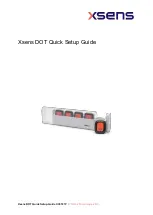
Endura AZ20 Oxygen Systems
Endura AZ20 – Pumped Reference Air Unit
2 Safety
2
INF09/027
Issue 3
2.5 Restriction of Hazardous Substances (RoHS)
2.6 Product Disposal
2.7 Safety Recommendations
For safe operation, it is imperative that these service instructions
be read before use and that the safety recommendations
mentioned herein be scrupulously respected. If danger warnings
are not heeded to, serious material or bodily injury could occur.
2.8 Service and Repairs
Other than the serviceable items listed in this document, none of
the pump’s components can be serviced by the user. Only
personnel from ABB or its approved representative(s) is (are)
authorized to attempt repairs to the system and only
components formally approved by the manufacturer should be
used. Any attempt at repairing the pump in contravention of
these principles could cause damage to the pump and corporal
injury to the person carrying out the repair. It renders the
warranty null and void and could compromise the correct
working of the pump and the electrical integrity or the CE
compliance of the pump.
If you have any problems with installation, starting, or using the
pump please contact the company that sold it to you. If this is
not possible, or if the results of this approach are not
satisfactory, please contact the manufacturer's Customer
Service
2.9 Potential Safety Hazards
The following potential safety hazards are associated with
operating the system:
Electrical (line voltage)
This symbol, when noted on a product, indicates a
potential hazard which could cause serious
personal injury and / or death.
The user should reference this instruction manual
for operation and / or safety information.
This symbol, when noted on a product enclosure or
barrier, indicates that a risk of electrical shock and /
or electrocution exists and indicates that only
individuals qualified to work with hazardous
voltages should open the enclosure or remove the
barrier.
This symbol indicates that the marked item can be
hot and should not be touched without care.
This symbol indicates the presence of devices
sensitive to electrostatic discharge and indicates
that care must be taken to prevent damage to
them.
The European Union RoHS Directive and
subsequent regulations introduced in member
states and other countries limits the use of six
hazardous substances used in the
manufacturing of electrical and electronic
equipment. Currently, monitoring and control
instruments do not fall within the scope of the
RoHS Directive, however ABB has taken the
decision to adopt the recommendations in the
Directive as the target for all future product
design and component purchasing. .
Note.
The following only applies to European customers.
ABB is committed to ensuring that the risk of any
environmental damage or pollution caused by any
of its products is minimized as far as possible. The
European Waste Electrical and Electronic
Equipment (WEEE) Directive (2002 / 96 / EC) that
came into force on August 13 2005 aims to reduce
the waste arising from electrical and electronic
equipment; and improve the environmental
performance of all those involved in the life cycle of
electrical and electronic equipment.
In conformity with European local and national
regulations (EU Directive 2002 / 96 / EC stated
above), electrical equipment marked with the above
symbol may not be disposed of in European public
disposal systems after 12 August 2005.
RoHS
Warning.
The installation of the pump should be performed
exclusively by personnel specialized and authorized to work
on electrical installations, in accordance with relevant local
regulations.
Caution.
This equipment has been tested and found to
comply with the limits for Class A digital device, pursuant to
Part 15 of the FCC Rules. These limits are designed to
provide reasonable protection against harmful interference
when the equipment is operated in a commercial
environment. This equipment generates, uses, and can
radiate radio frequency energy and, if not installed and used
in accordance with this instruction manual, may cause
harmful interference to radio communications. Operation of
this equipment in a residential area is likely to cause harmful
interference in which case the user is required to correct the
interference at his own expense.
























